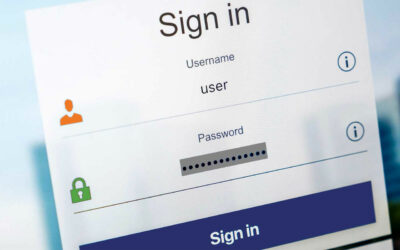Data breaches are a lot more common than you think.
Every passing year marks an upturn in the volume of hacks and data breaches against both small businesses and major corporations.
Although attacks on large organizations may harm businesses and affect consumer trust, it’s unlikely that a single cybersecurity incident could destroy a large company. For small businesses, however, the chances of making a full recovery from a data breach are much slimmer. In fact, sixty percent of small businesses that have go out of business within six months of a cyberattack.
What is a data breach?
If a security incident results in unauthorized access to an organization’s protected systems and data, it is typically classified as a data breach. A data breach can occur as a result of a few reasons:
Network Vulnerability
A network vulnerability is any weakness or flaw in software or hardware that can result in a security breach. Networks can become vulnerable when they aren’t updated or maintained.
Human Error
One of the biggest sources of data breeches comes down to simple human error. This can include the use of weak passwords, sending out or sharing sensitive information or falling for phishing scams.
Malware
Malware includes several malicious software variants such as viruses, ransomware, and spyware. Cyberattackers develop codes that enable them to access networks and damage data and systems.Criminal hackers are one of the most common culprits of data breaches, attacking organizations with malware, SQL injections, and keylogging tactics.
Employee Misuse
This kind of misuse involves authorized employees using their access to deliberately abuse their company’s systems. While this may be tricky to avoid, it’s important to limit access to sensitive information and networks to as little people as possible.
Physical Theft of a Device
This can include the theft of any device that contains sensitive information such as laptops, smartphones, hard drives, thumb drives, CDs, and servers. These types of thefts are very opportunist, making them difficult to predict.

The consequences of a data breach
Reputational damage
How can an organization maintain a good reputation if they can’t protect their network from cyberattacks?
The damage that a data breach can have on a business can be devastating, especially if the breach puts sensitive customer and client information at risk. Negative news coverage and loss of confidence from customers, stakeholders, and the general public can create long-term complications for any business. In an age where a negative post can go viral within hours, it’s important for brands to have an awareness of the risks and develop an action plan in case something goes wrong.
Compromised data
Personally identifiable information (PII) such as social security numbers, driver’s license numbers, contact information, and birth dates are all valuable data for cybercriminals. They can be sold and used for marketing, fraud, and identity theft. If your business collects personal information about customers, employees, and other partners involved, you have an obligation to protect that information. Failure to do so can result in fines, litigation, and other severe penalties.
Damaging downtime
The effects of a data breach can significantly impact business operations. Depending on the severity of the situation, an organization may be forced to shut down until a proper solution is found. According to research conducted by Cisco, 40% of small businesses experience at least eight hours of downtime following a security breach. This period of downtime can result in even more lost revenue.
Stolen intellectual property
Picture your business’s valuable intellectual assets in the hands of an unknown criminal. Sounds like a nightmare, right? And because the information exists in the form of digital data, it can be copied, sent, and manipulated in countless ways. Cybercriminals like to target sensitive data such as software codes, product drawings and manuals, specifications, and scientific formulas, which can be monetized quickly in different illicit marketplaces. The potential implications of IP theft include economic damage, operational damage and loss of a competitive edge, which can seriously affect a business’s ability to succeed.
Legal ramifications
Organizations that collect and store PII are legally required to implement data protection measures. Failure to protect PII can result in government fines, penalties, and even jail time in some extreme circumstances. The cost of litigation associated with a data breach can be enormous, which is why having a proper response plan is critical. The well-known hotel group, Marriott, was faced with a $123 million fine for failure to report a mega-breach involving over 300 million guests. In this case, sensitive information such as credit card numbers, phone numbers, passport numbers and mailing addresses had been accessed without authorization.
Organizations of any industry, large or small, are all vulnerable to data breaches. According to Statistics Canada, about one-fifth of Canadian businesses were impacted by cybersecurity incidents in 2019. And unfortunately, data breach recovery isn’t cheap. The financial damage starts when the breach is detected and continues even after it has been contained. Legal fees, identity theft protection for customers and employees, and revenue loss are all expensive factors that can contribute to the downfall of a business. According to the Hiscox Cyber Readiness Report, digital incidents can cost businesses of all sizes $200,000 on average.
Investing in the proper IT services can help you detect and prevent threats. If you’re looking to protect your business with smart IT solutions, feel free to contact us for more information today.




